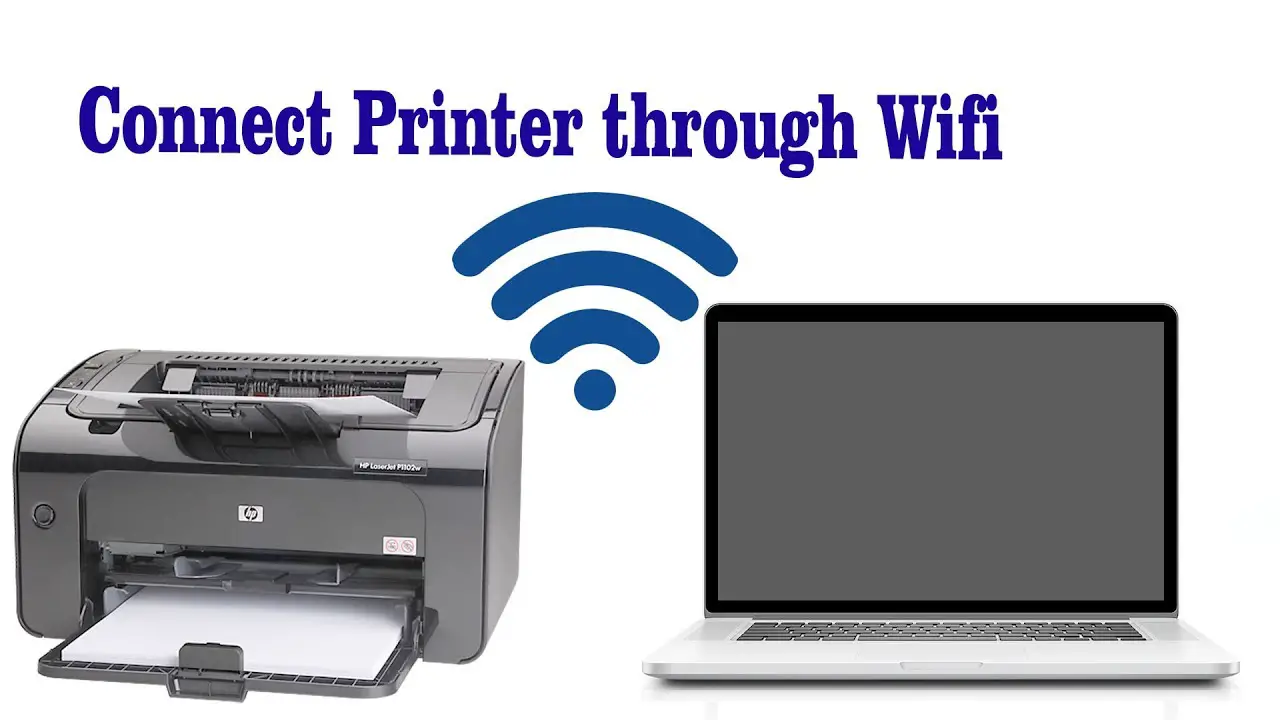
Connecting a printer to your laptop wirelessly provides a convenient and efficient way to print documents from the comfort of your workspace without the hassle of cables. Whether you are using a home printer or a shared office printer, setting up a wireless connection is simple and can save you time and effort. In this guide, we will walk you through the process of connecting a printer to a laptop wirelessly, so you can enjoy seamless printing.
Connecting a printer wirelessly to your laptop eliminates the need for physical cables, making it more convenient, especially in modern home or office setups where space is often limited. A wireless connection also allows multiple devices to access the printer, meaning you can print from your laptop, smartphone, or tablet, without needing to physically plug into the printer each time you want to print. Additionally, it enables you to place the printer anywhere within your Wi-Fi range, further enhancing the flexibility of your workspace.
1. Check Printer Compatibility and Network Setup

Before you begin, ensure that your printer supports wireless connectivity. Most modern printers come with built-in Wi-Fi or Bluetooth features, but it’s important to confirm this in the user manual or printer settings.
- Check for Wi-Fi Capability: Look for the wireless or Wi-Fi icon on the printer’s control panel or in the printer’s specifications. If your printer supports wireless printing, you will be able to connect it to your home or office Wi-Fi network.
- Connect Printer to Wi-Fi Network: The next step is to ensure that the printer is connected to the same Wi-Fi network as your laptop. To connect your printer to Wi-Fi:
- For Printers with a Screen: Use the control panel to navigate to the Wi-Fi Setup Wizard or Network Settings. Follow the on-screen instructions to select your Wi-Fi network and enter the network password.
- For Printers without a Screen: Many printers support Wi-Fi Protected Setup (WPS), which allows you to connect the printer to your network by pressing the WPS button on your router and the printer. Check your printer’s manual for WPS instructions.
Once the printer is connected to your Wi-Fi network, it will be discoverable by your laptop.
2. Enable Wireless Printer on Your Laptop

To connect your laptop to the wireless printer, you’ll need to install the necessary software and drivers. Most printers will automatically install required drivers through the operating system when they are first detected.
For Windows:
- Open the Start Menu and go to Settings.
- Select Devices, then choose Printers & Scanners.
- Click on Add a printer or scanner. Windows will begin searching for available printers.
- Once your printer appears in the list of available devices, click on it and select Add device. Windows will automatically install the necessary drivers for your printer.
- After installation is complete, you can set the wireless printer as the default printer for convenience.
For macOS:
- Open System Preferences from the Apple menu and click on Printers & Scanners.
- Click the + button to add a printer.
- Select your printer from the list of available printers. If it’s connected wirelessly, it should show up in the list.
- Once selected, macOS will install the required drivers automatically. If the printer’s drivers are not already installed, you may be prompted to download them.
- After installation, your printer will be available for use.
3. Test the Wireless Connection

Once you’ve connected the printer to your laptop wirelessly, it’s important to test the connection to make sure everything is working properly.
- Print a Test Page:
- For Windows: Go to Settings > Devices > Printers & Scanners, click on your printer, and select Manage. From there, click Print a test page.
- For macOS: In System Preferences, select Printers & Scanners, choose your printer, and click Open Print Queue. From there, you can print a test page.
- This will confirm that the wireless printer is properly connected and ready to use.
4. Troubleshooting Wireless Printer Connections

Sometimes, wireless printers may encounter connection issues. If you experience problems, here are a few troubleshooting steps to try:
- Ensure Printer and Laptop are on the Same Network: Double-check that both your printer and laptop are connected to the same Wi-Fi network. If either device is on a different network, they won’t be able to communicate.
- Restart the Printer and Laptop: If the printer isn’t showing up on your laptop, try restarting both the printer and the laptop. This can resolve minor connectivity issues.
- Check Printer Status: Ensure that the printer is turned on, has paper, and has enough ink or toner. Check the printer’s display screen for any error messages or warnings.
- Reinstall Printer Drivers: If the printer is not detected, you may need to reinstall the printer drivers. Visit the manufacturer’s website to download the latest drivers and software for your model.
- Re-run the Printer Setup: If you encounter further issues, try going through the printer’s setup process again. This may involve re-entering Wi-Fi credentials or resetting the network connection on the printer.
5. Print from Any Device Using the Wireless Printer

Once your printer is connected to your laptop, you can also use other devices like smartphones or tablets to print wirelessly. Depending on your printer and mobile device, there are a few ways to set this up:
- Google Cloud Print: Many printers support Google Cloud Print, which allows you to print from any device connected to the internet. Set up Cloud Print by linking your printer with your Google account.
- AirPrint (for iPhone/iPad): If you have an Apple device, you can use AirPrint to print directly from your phone or tablet. Ensure the printer supports AirPrint and is connected to the same Wi-Fi network.
- Printer Manufacturer Apps: Many printer manufacturers, such as HP, Epson, and Canon, offer their own apps for mobile printing. Download the app for your printer model from the App Store or Google Play Store, then follow the instructions to print from your mobile device.
6. Secure Your Wireless Printer

To ensure that your wireless printer is secure, follow these best practices:
- Change the Default Wi-Fi Password: Set a strong, unique password for your Wi-Fi network and your printer’s wireless connection to prevent unauthorized access.
- Disable Remote Printing: If your printer supports remote printing (i.e., printing from outside your local network), consider disabling this feature if you don’t need it to prevent potential security risks.
- Enable WPA3 or WPA2 Encryption: If your printer supports it, ensure that your Wi-Fi network uses the latest encryption standards, such as WPA3 or WPA2, to protect your network from unauthorized access.
Conclusion: Connecting Your Printer to Your Laptop Wirelessly
Connecting a printer to your laptop wirelessly is a straightforward process that can significantly improve your productivity by allowing you to print without cables. By following the steps outlined in this guide, you’ll be able to set up a wireless connection, test your printer, and troubleshoot common issues. Whether you’re printing from a laptop, smartphone, or tablet, having a wireless printer makes it easier to print from anywhere in your home or office. Enjoy the convenience of wireless printing and the freedom to work without being tethered to a physical connection!


















